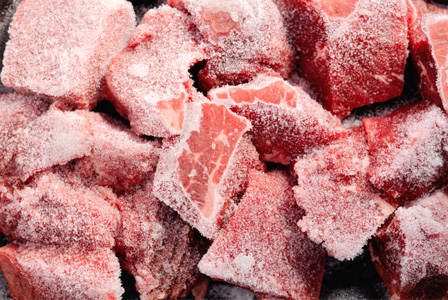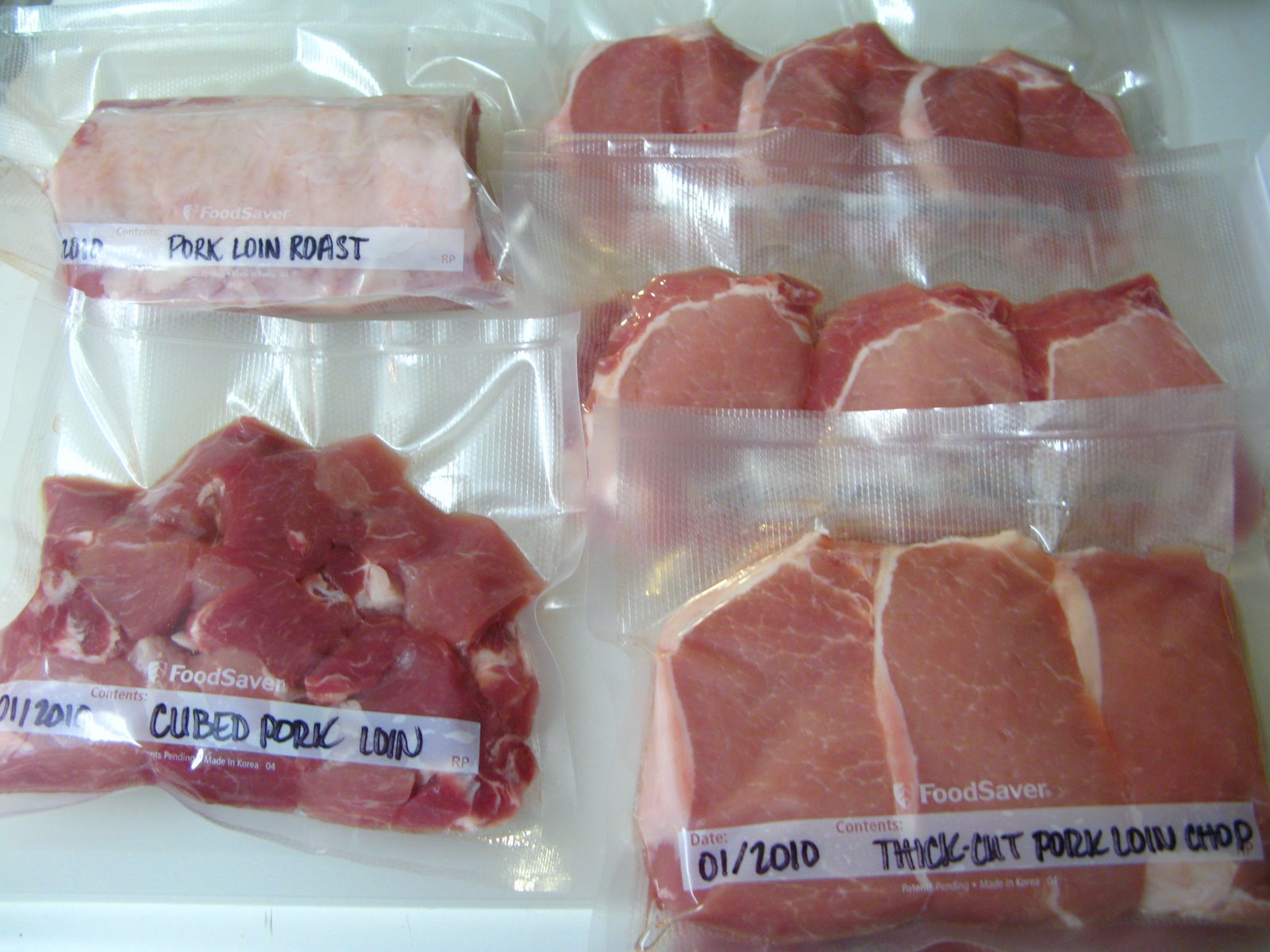
[h3]What is it?[/h3]
Freezer burn is dehydration (drying out) on the surface of frozen food due to air exposure. The telltale signs are whitish splotches—ice crystals—on the food itself. Meat or fish might look discolored or dry in spots.
surface of frozen food due to air exposure. The telltale signs are whitish splotches—ice crystals—on the food itself. Meat or fish might look discolored or dry in spots.
The most common reason for “freezer burn” is that someone stayed in the freezer too long eating ice cream out of the container and was afraid of getting caught. Or that someone left the freezer door opened, or that the freezer door gets opened and closed so much that food begins to sweat in its bags, boxes, plastic containers, and then refreezes. Other times, freezer burn happens through no fault of our own. You might come across it when shopping for groceries, the result of food that wasn’t properly wrapped or stored. But at home, it’s preventable. Here’s how to spot it and what you can do about it.
[h3]Will it make me sick?[/h3]
No. Freezer burn is moisture loss. It isn’t a pathogen and has nothing to do with food safety, just food quality. But when it happens to otherwise perfectly fine food, it’s a bummer.
“It’s not going to taste good,” said Laura Barr, a nutrition and wellness educator with the University of Illinois Extension.
“Freezer burn also robs food of texture and nutritional value”, Barr said. So while the USDA suggests cutting off the affected portions before or after cooking, you might have to chalk it up to a total loss depending on how badly freezer-burned your food is.
[h3]Shop smart[/h3]
“What you buy at the store is in packaging that’s designed to prevent freezer burn. Frozen meat will stay freezer burn-free on average between three to six months and for up to a year under ideal conditions,” Barr says.
Still, be on the lookout for those whitish spots or any nicks or tears in the wrapping, and choose the latest expiration or “best by” dates you see.
For something like frozen vegetables where you can’t see what’s inside, press the bag to feel whether the food is separated (good) or in a big ball (not good).
“If things are kind of stuck together, usually that means it’s lost temperature control and so it thaws and refreezes and sticks together,” Barr said.
[h3]At home[/h3]
Air is the enemy. Act accordingly.
To avoid freezer burn with fresh meat, poultry, fish and pork I portion it into serving sizes for my family and place it in freezer-safe bags labeled with the date I am freezing it. Similarly, with frozen bags of produce, once you’ve opened them, transfer the contents to freezer bags or airtight containers. Try to squeeze as much of the air out of the storage container as possible.
Another suggestion is to wrap tightly in moisture-proof freezer wrap and keep solidly frozen.
Freezer burn and spoilage happens when food is placed in the freezer, then pulled out to be used. When the food is not used, it gets put back in the freezer. It is a best practice to place food in the freezer one time only, except for ice cream and all of that. Taking food out and putting it back in the freezer just causes problems.
Your freezer, by the way, should be at 0 degrees. Use a kitchen thermometer to check. (While you’re at it, check your fridge; it should be 40 degrees or below.)
[h4]Here are some quick videos that are fun to watch:[/h4]Freezer Burn: //www.youtube.com/watch?v=isv4l_07SDw
How to Avoid Freezer Burn: //www.youtube.com/watch?v=oQ2XQDTzmMM
How to Store and Freeze Meats: //www.youtube.com/watch?v=xVOhWQF8eTk
Freezing Fresh Fruits Safely: //www.youtube.com/watch?v=Xcwf_32Q3l0
How to Freeze Raw Vegetables: //www.youtube.com/watch?v=hZcU90j5ON4
Keep food too long in the freezer and inevitably, eventually, it will get freezer burn. That’s just how it goes.
So use up that meat! Cook those vegetables and eat that gelato, for crying out loud—preferably with the freezer door shut.
This material was inspired by: //www.epicurious.com/expert-advice/everything-you-need-to-know-about-freezer-burn-article?mbid=social_twitter
© Chefsville. All Rights Reserved.